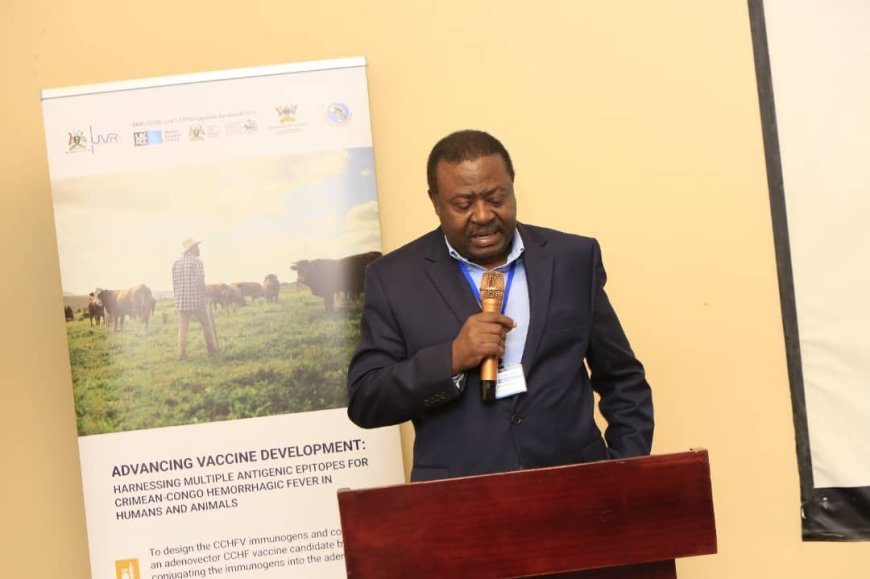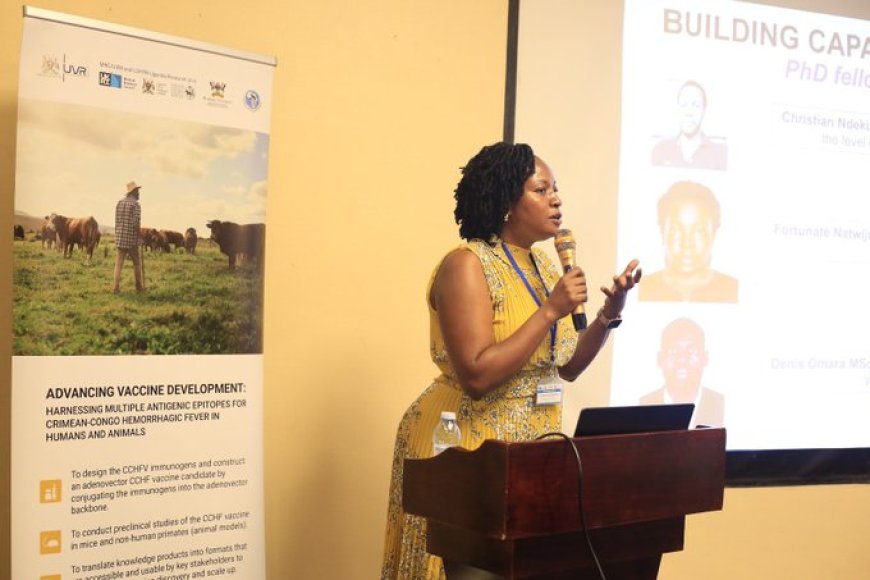MRC/UVRI, LSHTM Uganda launches project to develop Crimean-Congo Fever Virus to enhance the infectious disease response

The Medical Research Council/Uganda Virus Research Institute together (MCR/UVRI) with the London School of Hygiene & Tropical Medicine Uganda Research Unit (LSHTM) and partners have launched a groundbreaking project focused on developing a vaccine for the Crimean-Congo Hemorrhagic Fever Virus (CCHFV) a widespread disease caused by a tick-borne virus and has had a significant impact on human and animal health.
According to the researchers, the two-year collaborative vaccine study project is aimed at enhancing preparedness and response capabilities for emerging infectious diseases and thus boosting global health security targeted to end Crimean Congo hemorrhagic fever in humans and animals.
During the launch of the study project held at Lake View Hotel in Entebbe, The Director of UVRI, Prof. Kaleebu Pontiano informed the participants that the trials being conducted are very essential in advancing the future of vaccine development and testing and will ensure that our research is supported by real-world data.
He said that in the study, they will carry out various vaccine tests to ensure there are no effects of human and animal organs.
“First, we will create essential immunogenicity for the vaccine and next we will build the adenovector CCHFV candidate by incorporating these immunogens. The preclinical trials, involving mice and non-human primates, are showing promise. We’re also testing the vaccine's safety and effectiveness across multiple stages, with no adverse effects on vital organs and positive immune responses” he said

Prof Sheila Balinda
Prof Sheila Balinda - Molecular Virologist, Principal Investigator for the CCHFV said the launch is a significant step in developing the vaccine for CCHF which she adds will go a long way in fighting infectious diseases, emphasizing the need to develop a vaccine that targets both humans and animals in prevention of infection.
“Today marks a significant step in our fight against infectious diseases! We're excited to launch a groundbreaking project focused on developing a vaccine for the Crimean-Congo Hemorrhagic Fever Virus (CCHFV), a severe zoonotic disease. Animals are natural reservoirs for CCHF” she said
Meanwhile, Brenda Nakazibwe, The Team lead STI-OP while presenting the CCHF Vaccine said that following infection by a tick bite, the incubation period is usually one to three days, with a maximum of nine days, adding that the length of the incubation period depends on the mode of acquisition of the virus.
Dr. Simon Aliya, DHO of Nakaseke District emphasized the importance of early community engagement to enhance CCHFV vaccine acceptance and uptake, highlighting that there is a need for clear communication, tailored for each community, addressing concerns about vaccine safety, side effects, and benefits
“Empowering local leaders and using existing community structures can play a critical role in ensuring that the vaccine is well-received once approved. The VHTs, CHEWs and local leaders are central to this process” he said
According to scientists, the Crimean-Congo Hemorrhagic Fever Virus is on the verge of affecting 3 billion people globally. They say that the new vaccine project uses a modified chimpanzee adenovirus vector harmless to humans but engineered to carry CCHFV proteins, tricking the immune system into producing antibodies and T-cells, essential for protection against the virus
Crimean-Congo Hemorrhagic virus (CCHFV) is a tick-borne virus that moves between animals, and eventually to humans, via livestock. It’s a priority disease for the WHO due to its high potential for outbreaks and rapid spread, especially in low and middle-income countries
It was first seen in Europe in 1944 affecting both humans & animals and is spread mainly by ticks, and has an 11% mortality rate.
Since 1944, CCHFV outbreaks have increased significantly, with over 50 countries affected including regions in Africa, Asia, and even Europe, and there are currently no approved vaccines or treatments












